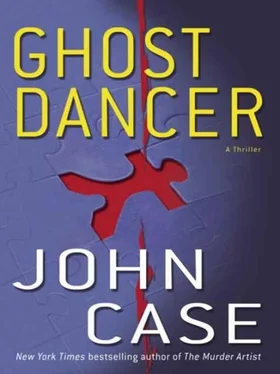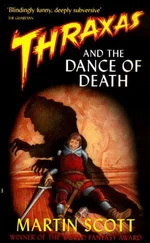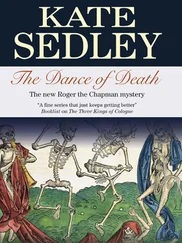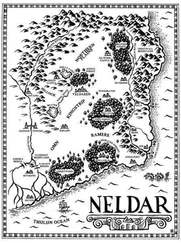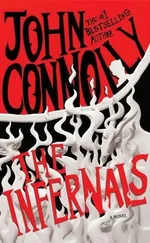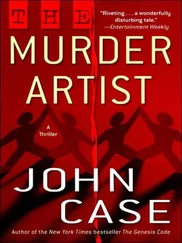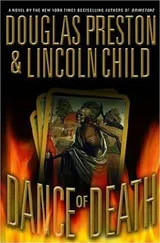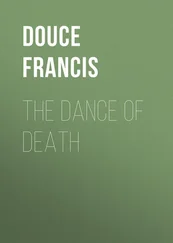By then, Wilson himself was breathing hard, as if he were the one who’d been running around. Which was funny, because he hadn’t actually done anything. Just spun a little wheel, and pressed it to the boy’s chest.
He searched his heart for what he felt and, to his surprise, found that there was nothing there. The kid was dead, that’s all.
Shit happens.
But that was yesterday, and now Wilson had his own problems.
Commander Ibrahim had arranged for a technical to take him to the Ugandan border, near Fort Portal. There, an armored car would be waiting to drive him to Kampala. From the Ugandan capital, he could catch a plane to London, and before he knew it, he’d be in Antwerp.
Wilson declined the offer. Entering Uganda from the Congo in an armored car would attract too much attention, he said. He told the militiaman that he and Hakim had discussed it in Baalbek. And they’d decided that he should go to Bunia. Hakim’s friends would arrange for a boat. He’d cross Lake Albert at night, avoiding the Customs’ police and soldiers. In Uganda, Wilson and his party would travel by motorcycle along bush roads to the main highway, and from there to Kampala. Zero and Khalid would be with him all the way, providing a measure of security.
Ibrahim was skeptical, but in the end, it wasn’t his problem. He had his guns. Wilson could do what he pleased.
“Is there a bank in Bunia?” Wilson asked.
“Of course,” Ibrahim replied.
Wilson thanked him. “I’ll need a safe-deposit box until the boat leaves.”
“No problem.”
In reality, of course, there was no boat, nor were there any “friends.” Bunia was simply Plan B, a way for Wilson to rid himself of Ibrahim while finding a buyer for the diamonds he could no longer sell in Antwerp.
Because whoever was sending messages from Bobojon’s computer was undoubtedly holding Hakim as well. If Wilson showed up at De Witte Lelie Hotel, he’d probably be “renditioned.” The moment he walked in, the CIA, FBI – whoever it was – would take him down. They’d stab him with a needle and that would be that. He’d wake up with a hood on his head, chained to a seat in Terrorist Class on his way to a prison that didn’t exist.
Thus, Plan B.
The capital of the Congo’s most dangerous province, Bunia was the African equivalent of Deadwood. A swarming dystopia, ripe with garbage, sewage, and disease, the city was a crumbling slum of three hundred thousand people – many of whom were starving, sick, and desperate. Not far from Lake Albert, it was a little piece of hell in an otherwise heavenly setting.
The diamonds Commander Ibrahim had turned over in exchange for the arms – more than three pounds of preselected “rough,” ranging in size from three to five carats – were concealed in a beautifully carved ironwood head, hollowed out for the purpose. There were 7,263 carats, and every one of them was of gemstone quality. Commander Ibrahim guaranteed it, and Wilson took the militiaman at his word. And why not? Ibrahim and Hakim were in business together, while Belov and Wilson were merely their agents. The business was as bloody as it was lucrative, and it was built on trust. If you asked either man why he trusted the other, he would talk about Allah, and the cause they shared. He would invoke the Umma of Muslim solidarity, and allude to a decade of secret operations in which the two of them had been engaged. But in the end, both men knew that their trust was held together by something even stronger than Islam. It was held together by one man’s gun and the other man’s knife, and by each man’s certain knowledge that the other could reach out and touch him, wherever he might be.
So if Ibrahim said the diamonds were good, the diamonds were good.
Even so, Wilson had done a bit of reading, and he’d learned that the diamond industry was an interesting one. Among other things, it was the quintessential cartel.
For more than a century, the price of gem-grade diamonds has been controlled by the South African DeBeers company and its partners. The firm accomplished this by creating a vertically integrated monopoly that enabled it to limit the supply of diamonds. It was able to do this because DeBeers owned all or part of nearly every diamond mine in the world. Those gems that it did not produce it bought through a subsidiary, the so-called Diamond Corporation.
In this way, the market was cornered.
Each year, some 250 “sight-Holders” were invited to London by the Central Selling Organization, or CSO. This, too, was a DeBeers creation, candidly referred to by Israeli diamond buyers as “The Syndicate.”
In London, sight-Holders were permitted to buy presorted parcels of diamonds at fixed prices, usually $42,500 each. The parcels could not be examined until after they were purchased, and so were something of a pig in a poke. If a sight-Holder didn’t like what he got, he was free to reject a parcel. But if he did that, he’d soon be out of business. No further invitations would be forthcoming from the CSO.
So the sight-Holders accepted what they’d been given, trusting DeBeers in much the same way that Wilson trusted Commander Ibrahim.
After buying their parcels, sight-Holders would resell them to wholesalers on the diamond exchanges of Antwerp, Amsterdam, New York, and Ramat Gan (Israel). Meanwhile, an artificial scarcity was maintained by the Diamond Corporation, which bought surplus diamonds wherever they might be found. These diamonds were stored by the kilo in London vaults, or left in the ground to be mined at a later date (if ever).
Conflict diamonds were the wild cards in the game. These were gems mined by the supernaturally violent rebel militias in Sierra Leone, Angola, and the Congo. Wrested from jungle riverbeds by de facto slaves earning sixty cents a day, “blood diamonds” made their way to the world’s exchanges by irregular routes, without the intervention of the Syndicate.
Because these conflict diamonds fueled wars throughout West Africa, while undermining the price of diamonds sold by the CSO, DeBeers worked to establish protocols that would ensure that “legitimate diamonds” came with a certificate of origin.
There was an ironic symmetry in this, Wilson thought. End-user certificates were forged or bought to enable the sale of arms to third parties like Commander Ibrahim, whose militia presided over a slave colony charged with mining diamonds in the jungle. Why, then, shouldn’t the diamonds require a certificate of their own, one that rinsed the blood from the stones by creating a phony paper trail all the way from Africa to the bride’s ring finger?
Though blood diamonds were no different from others, except in the violence of their provenance, they were sold at a discount to their counterparts from South Africa, Australia, and Siberia. According to Hakim, Wilson’s diamonds would fetch about four million dollars, about half of what they’d bring if DeBeers was marketing them.
The only problem, now that Hakim was hanging upside down in the hold of an aircraft carrier, was finding a buyer. With June 22 looming closer and closer, Wilson had no time to lose.
They got into Bunia a little after noon, pulling up in front of the heavily sandbagged Banque Zaïroise du Commerce Extérieur. While Zero and Khalid waited outside, Wilson went in to meet the manager.
Mr. Bizwa was an East Indian gentleman in his late forties. He sat behind an ornately carved Empire desk, beneath a portrait of the president, Joseph Kabila. Greeting Wilson with a firm handshake, he gestured to a chair and asked how he could be of help.
“I need a safe-deposit box,” Wilson told him. “For this!” He produced the ironwood head, swaddled in cloth, and set it on the desk.
“May I look?” Bizwa asked. Wilson nodded, and the bank manager unwrapped the sculpture.
Читать дальше
